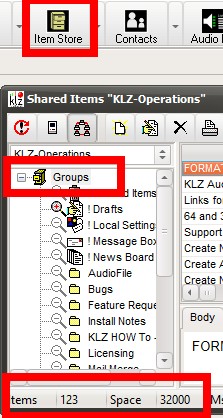This article discusses the importance of managing NewsRoom 50 data storage.
Hard drives don't have an infinite size and databases have performance limits. It is important to understand how to manage the storage of the NewsRoom 50 system to keep it running at its best.
While "Wire Queues" are self purging and manage themselves, other storage databases require the system's users to determine when a "news item" is no longer needed in the system.
Deleting, Purging and Archiving
- Deleting a news item permanently removes it from the system.
- Purging removes multiple items from the system using a single command.
- Archiving sends a copy of the item to the system's searchable archive.
We recommend 'Archiving' content as you can retrieve it at a later date if needed. Where as, deleting and purging are permanent.
Managing Wire Queues
Wire Queues are managed by the system. Once capacity has been reached, the oldest items are deleted as new items come in. Items which the users wish to use in a news cast, now or in the future, should be copied to an ItemStore folder.
Managing Audio Lists
Audio lists are of a fixed size and can become full after a period of system operation. We need to remove audio items which are no longer need in the system. You have two options for removing audio items from your audio lists.
You can delete singe audio or multiple audio items from the "My-Sites" tool in the NewsRoom Client. These deleted items will be available for period limited time in the Audio "Recycle Bin" which is self purging.
You can also "Archive" your audio items, in which case they will be sent to the system's searchable archive where they can be retrieved at a later date if desired.
Protecting Scheduled Audio
"Scheduled audio" is audio which is currently embedded in a new cast. The system will not allow the deletion of an audio item which is embedded in a current news cast. However, users can also set a hold date on an audio clip which will also prevent the system from deleting an audio item. If an audio item is accidentally deleted from the system, it can temporarily be retrieved from the "Audio Recycle Bin"
Managing Item Stores
Item Stores are also of a fixed size and must be managed by the systems users. This is particularly important for 'Shared" item stores which are shared among many users and can become full quite quickly. Once again you have some options regarding how you remove unneeded news items. You can determine the current number of items in any ItemStore. Open ItemStore tool in NewsRoom 50 and click on the folder named Group. The bottom status bar will show Items x and Space.
Space = capacity of stories for all folder in that ItemStore.
Items = how many stories are contained in that ItemStores folders.

You Can Delete a single or multiple items in the "My-Sites" tool of the NewsRoom client. Deleting moves the items into the 'deleted items' of the Item Store.
Deleting items from the "Deleted" folder removes them permanently from the system.
You can also purge an item store folder. This operation is performed from the legacy "Item Store" Tool. This procedure removes multiple items from an Itemstore.
You can also archive single or multiple ItemStore items for use at a later day using the archive function in the NewsRoom My-Sites tool.
Protecting ItemStore Items.
The ItemStores primary function are to store current and future items which are not currently schedule in a news cast. In order you protect against being deleted, you can apply a "Hold Date" to an ItemStore Item. This will prevent the item from being deleted before that date.
Managing Casts
News Casts contain the content which will be going 'On-Air'. Once a news cast has been completed and the stories no longer are needed they will need to be removed from the cast so that the next days cast can be built with fresh stories.
- You can delete stories individually, in which case they are lost permanently,
- You can Purge whole cast which will remove all items from the cast. The purged Cast will appear in the alias called Library found in the My Sites tool.
- You can Archive the cast which will send a copy to the system's Archive for later retrieval.
- The Purge and Archive commands can be configured to both be performed when the user performs an "Archive" operation.
Protecting Cast Segments
Cast items can be protected from the "Purge"operation by configuring cast item "Story Type" property to be "Hold Normal". This also applies to segment or comment type stories.

